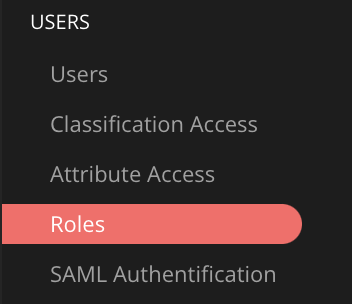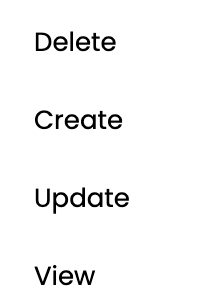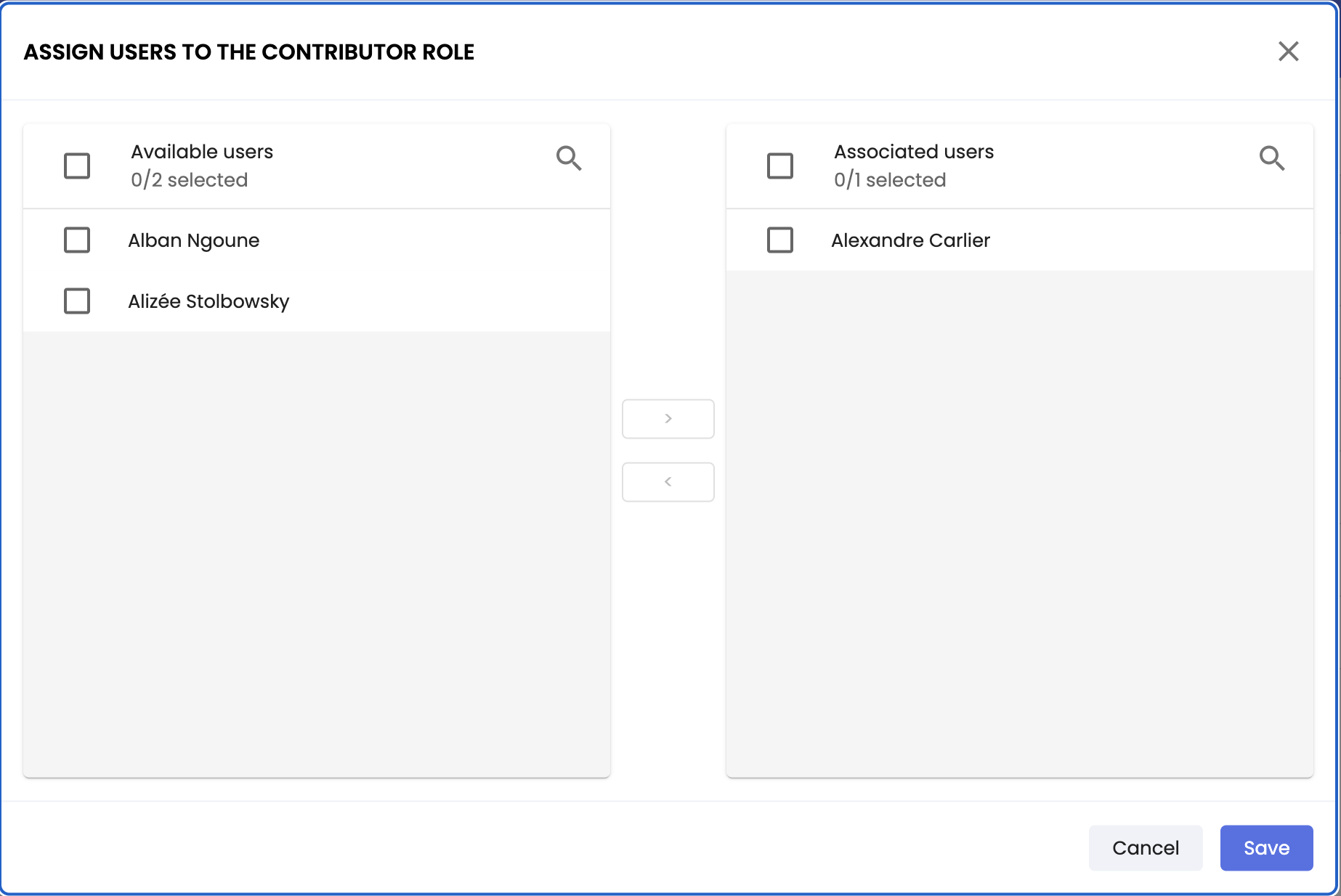Managing User Roles
Learning Objectives
- Create, modify, and delete a role.
- Manage role permissions.
- Assign or unassign users to a role.
Overview
What is a role?
A role is a set of authorized actions for a specific group of users.
Roles allow you to:
- Limit accessible actions for certain users.
- Customize the user interface by displaying only the buttons or icons corresponding to assigned permissions.
Good to know
- Users can have multiple roles.
- Administrators have all permissions by default, regardless of assigned roles.
Use Cases:
- Define the actions that a user or group can perform: create, edit, delete, validate, etc.
- Restrict access to certain sections of the PIM (e.g., prevent access to user or data flow management).
- Simplify permission management by centralizing rights through roles rather than assigning them individually.
Accessing the Roles Page
- From the administration menu, click Roles in the sidebar.

-
The roles page appears, displaying:
- A list of existing roles, if any.
- A Create a Role button in the top right corner.

Creating a Role
-
Click Create a Role.
-
Fill in the required information:
- Name (mandatory): Role name.
- Code (mandatory): A unique code generated automatically (modifiable only at creation).
- Description (optional): Briefly describe the role’s purpose.
-
Add the Permissions Associated to the Role:
- Browse the available actions.
- Check the boxes for the actions the role can perform.

- For each available action, expand the dropdown menu to define CRUD rights: Create, View (Read), Update, Delete.

-
Click Create to save the role.
Permissions TableFind a list of permissions and their scope when assigned to a role: Permissions Table
Modifying a Role
- Click the Edit icon next to the relevant role.
- Modify the necessary fields:
- Name, description, or permissions.
- Click Save.
Deleting a Role
- Click the Delete icon next to the relevant role.
- Confirm the deletion in the popup window.
Warning:This action is irreversible.
Assigning or Unassigning Users to a Role
Assigning a User
There are two methods to assign a role to a user.
-
Assign a user from the roles window:
- Click Manage Users next to the relevant role.
- In the window that appears:
- Available users: left side.
- Assigned users: right side.
- Select one or more users on the left.
- Click the arrow to move them to the right.

or
-
Assign a user to a role from their user account:
- Click Users in the Administration Menu.
- Locate the user and click Edit.
- In the opened window, go to the section Select The User Permission.
- In the Role dropdown menu, select the required role (multiple roles permitted).

Users are now assigned to the role.
Unassigning a User
There are two methods to unassign a role from a user.
- From the roles page, click Manage Users.
- Select one or more users from the right-side list.
- Click the arrow to move them to the left.
Users are now unassigned from the role.
or
- Click Users in the left panel.
- Locate the user and click Edit.
- In the opened window, go to the section Select user rights.
- In the Role dropdown menu, modify the role.
LimitationsEach user must be assigned at least one role.
SummaryA role groups permissions that define the actions allowed for a user or group of users.
Role Purpose:
- Restrict user-accessible actions.
- Adapt the user interface based on rights.
- Simplify permission management through centralization.
Managing Roles:
- Access the roles page via the administration menu.
- Each user must have at least one assigned role.
Creating a Role:
- Provide the name, code, and associated permissions.
- Modify a role: adjust the name, description, or permissions.
- Delete a role: irreversible action.
Assigning and Unassigning Roles:
- Assign users to a role via the roles page or their profile.
- Unassign a user by removing the role in the same sections.
Next Chapter
Now that you know how to manage user roles, let’s explore how to Configure SSO SAML Authentication.
Updated 3 months ago
